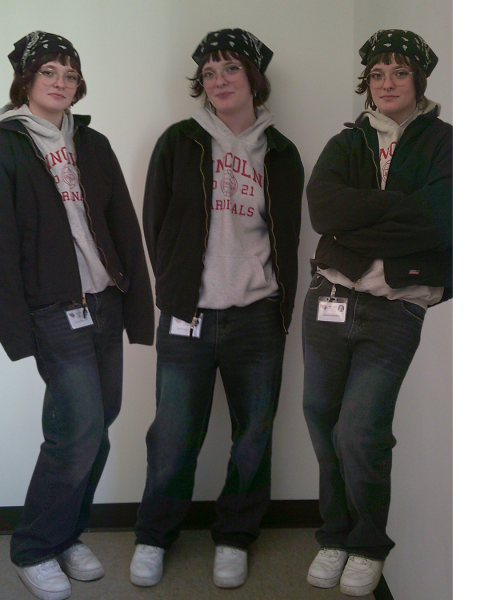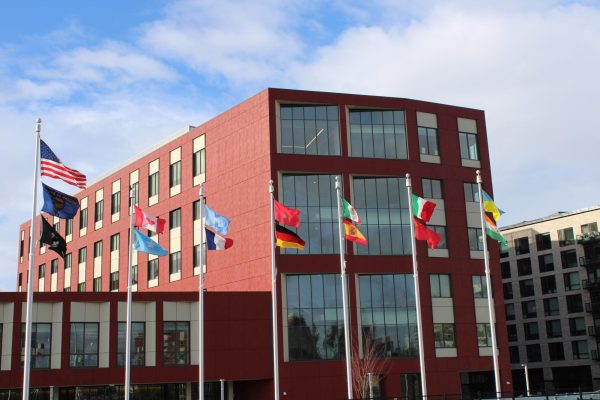Staff essay: Fast fashion is harming our planet
Junior Nolan Murphy enjoys making his own clothes. He used his sewing machine to make these green pants from scratch.
As the holiday season is upon us and holiday sales make clothing cheaper and cheaper, it is important to keep in mind that what you buy has an effect on the planet. A massive contributor to climate change is the fashion industry. It is so important to stay away from flash sales and extremely cheap prices, as they have an extremely detrimental effect on the planet.
According to Earth.Org, a global not-for-profit environmental organization, the fashion industry is the third largest polluting sector on the planet. It’s responsible for 10% of global greenhouse gas emissions and releases 1.2 billion tons of carbon dioxide per year. It is becoming more important to think critically about what you are purchasing and its impacts on the world.
18% of the fashion industry is made up of fast fashion. The term fast fashion was coined by the New York Times at the beginning of the 1990s when Zara arrived in New York and promised consumers that all products would go from the design stage to being sold in stores within 15 days. According to Bloomberg, in 2020 Zara produced 840 million garments for their 6,000 stores. They release 24 collections every year, most of which ends up in the landfill.
Another type of fast fashion has shot into consumer popularity because of its incredibly cheap price tags, and ultra-fast fashion. According to goodonyou, some brands that fall into this category are SHEIN, Missguided, Forever 21, Zaful, Boohoo, and Fashion Nova. These brands, while they initially seem appealing, are contributors to the climate crisis.
According to The Guardian, SHEIN’s Chief Operating Officer Molly Miao said that, SHEIN releases between 700 and 1,000 new items a day. About 70% of SHEIN’s products stay in stock for less than 3 months.
Junior Erika Leung is a co-president of the environmental justice club (EJC). She has concerns about overconsumption leading to waste which detrimentally affects the planet.
“Clothes are sitting in landfills for years and years. They aren’t good quality and they don’t decompose either. All these clothes are just building up in landfills and having a terrible impact on the environment,” she said.
Leung sees the overconsumption of fast fashion stemming from a shorter trend cycle.
“Firstly, trend cycles are happening faster than ever. Things that were trendy or cool last year or even a couple of months ago are seen as outdated even now. How fast we consume clothes contributes a lot to waste,” she said.
Some students are seeking alternatives. Junior Nolan Murphy makes his own clothes and sells his thrift finds at vintage markets. He is passionate about sustainable fashion.
“I researched fast fashion and know how much it is killing our world and how horrible it is for the environment. I also feel like any difference I can make is important and will have an impact. It is important to thrift clothes whenever possible because it is better for the planet. They can also be super cute and unique,” he said.
Leung also gave some sustainable options for shopping from fast fashion brands.
“Shopping from brands that are into textile recycling is a great alternative and also upcycling your own clothing–taking clothes that you don’t find wearable and using your creativity to make them stylish again,” she said.
Buying the cheapest clothes isn’t just about finding good deals, it also has a negative impact on our planet. So, next time you are in a store or online, looking at ten-dollar shirts and twenty-dollar pants, think about the effect purchasing them might have on the planet, and maybe don’t buy them. There are plenty of opportunities for sustainable shopping at a variety of prices audit is imperative that you seek those out.













